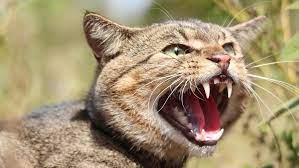Australia, with its unique and diverse ecosystem, is home to a remarkable array of wildlife found nowhere else on Earth. However, alongside its native inhabitants, Australia also grapples with the challenges posed by feral animals – non-native species that have invaded the continent and wreaked havoc on its delicate balance. In this article, we delve into the threat of wild animals in Australia and underscore the critical importance of effective animal control Australia management.
The Menace of Feral Animals
Feral animals, often intentionally or accidentally introduced by humans, are species that establish self-sustaining populations outside their natural range. These invaders lack natural predators and competitors, allowing them to multiply rapidly and disrupt ecosystems. Among the most notorious feral animals in Australia are:
European Rabbits: Introduced in the 18th century, rabbits are prolific breeders that destroy vegetation, leading to soil erosion and habitat degradation.
Red Foxes: These predators have devastated native wildlife populations, particularly ground-nesting birds and small mammals.
Feral Cats: With an insatiable appetite for native animals, feral cats have driven many species to the brink of extinction.
Cane Toads: Introduced to control agricultural pests, these toxic toads have become pests themselves, poisoning predators attempting to consume them.
Impact on Ecosystems
The unchecked proliferation of feral animals disrupts Australia’s ecosystems in multiple ways:
Predation: Native animals, unaccustomed to these new predators, often fall victim to feral species’ hunting prowess.
Competition: Feral animals compete with native species for resources such as food, water, and shelter, often out-competing them due to a lack of natural predators.
Habitat Degradation: Animals like rabbits and feral pigs destroy native vegetation through overgrazing, leading to erosion and loss of habitat.
Disease Spread: Feral animals can introduce and spread diseases among wildlife and domestic animals, posing threats to public health and agricultural industries.
The Importance of Feral Animal Control
Addressing the feral animal menace is not just an ecological concern; it’s a necessity for the well-being of Australia’s environment, economy, and society.
Preserving Biodiversity
Effective feral animal control is vital to safeguarding Australia’s unique biodiversity. By curbing the population growth of invasive species, native flora and fauna can thrive without undue pressure.
Agricultural Protection
Feral animals can wreak havoc on agricultural lands, leading to crop loss, livestock predation, and economic hardship for farmers. Implementing control measures helps protect Australia’s vital agricultural industry.
Conservation Efforts
Many native species, such as the Eastern Bettong and Brush-tailed Rock-wallaby, are endangered due to feral predation. Controlling wild animals is critical to aiding conservation and recovery efforts.
Management Strategies
Australia employs a range of strategies to combat the feral animal threat:
Fencing: Erecting fences around sensitive areas keeps feral animals out and allows native species to flourish within a safe zone.
Trapping and Removal: Humane traps capture feral animals, which are either humanely euthanized or relocated.
Biocontrol: Introducing natural predators or diseases that target specific feral species can help reduce their populations.
Community Involvement: Engaging local communities in feral animal control programs fosters a sense of responsibility and ownership, enhancing the effectiveness of management efforts.
Taking Action: Everyone’s Role in Feral Animal Control
Managing feral animals only falls on government agencies and conservation organizations. Every individual can play a vital role in curbing the impact of invasive species. Here’s how you can contribute:
Responsible Pet Ownership
If you own a pet, ensure it doesn’t become part of the feral animal problem. Please keep your pets indoors or within secure enclosures, and ensure they are spayed or neutered to prevent unwanted breeding.
Reporting Sightings
Be vigilant and report any sightings of feral animals to local authorities or wildlife management agencies. Your information can help experts track and address invasive species’ movements.
Support Conservation Efforts
Contribute to organizations working on feral animal control and conservation. Your donations and volunteer efforts can significantly impact safeguarding Australia’s unique biodiversity.
Minimize Food Sources
Avoid leaving food scraps or waste in outdoor areas, as they can attract feral animals. Secure garbage bins and compost piles to prevent easy access for these invaders.
Educate Others
Spread awareness about the threats posed by feral animals and the importance of their control. Engage in conversations, share educational materials, and encourage others to take action.
Success Stories: Celebrating Effective Feral Animal Control
Several success stories highlight the positive outcomes of dedicated feral animal control efforts in Australia:
Macquarie Island Restoration
By eradicating invasive rabbits, rats, and mice, Macquarie Island witnessed a remarkable recovery of its native vegetation and bird populations.
Threatened Species Recovery
Intensive feral animal control efforts have contributed to recovering iconic Australian species like the Tasmanian Devil and the Western Swamp Tortoise.
Island Sanctuaries
Numerous small islands around Australia have been transformed into sanctuaries through comprehensive feral animal eradication programs, providing safe havens for native species.
Conclusion: A Shared Responsibility for a Resilient Future
Australia’s fight against feral animals is a collective effort that requires dedication, cooperation, and sustained action from individuals, communities, and governments. By understanding the threat posed by invasive species and embracing effective management strategies, we can preserve the beauty and uniqueness of Australia’s natural landscapes for generations to come.
Remember, the fate of Australia’s remarkable wildlife rests in our hands. Every contribution matters in this battle to protect our environment and safeguard the future. Through dedicated management and a united front, we can conquer the challenge of feral animal control and secure a brighter future for generations to come.

